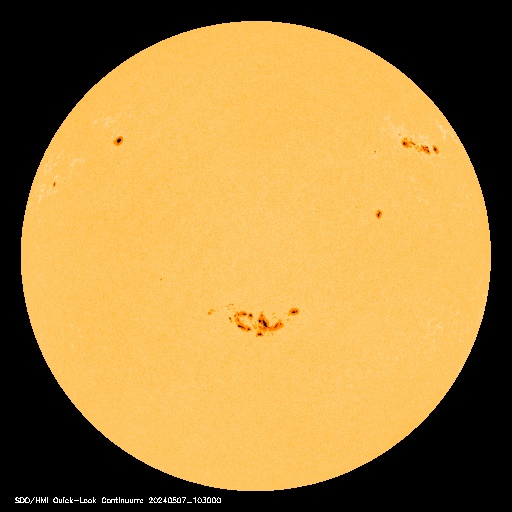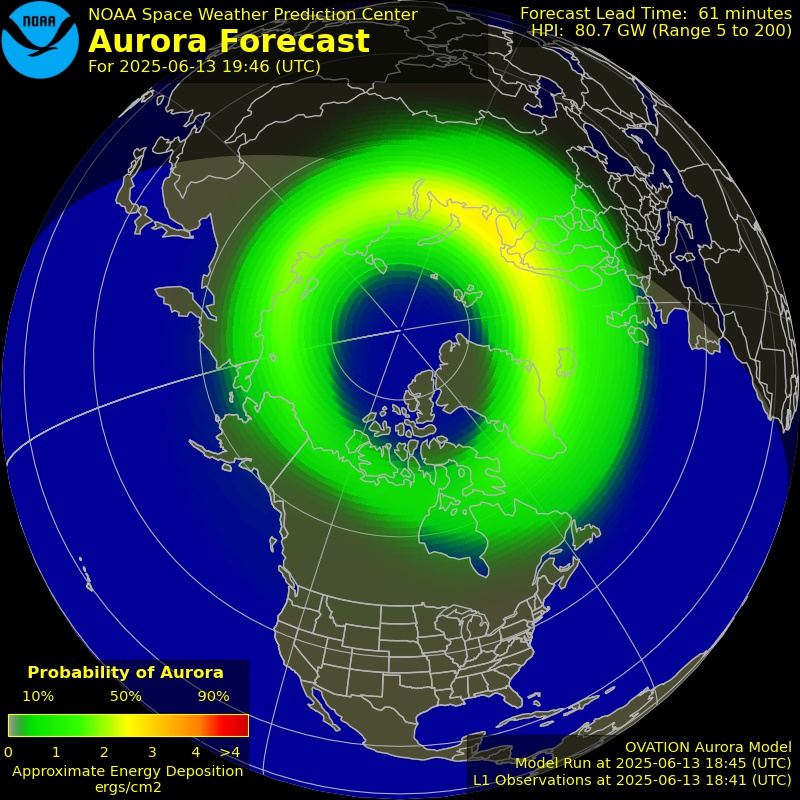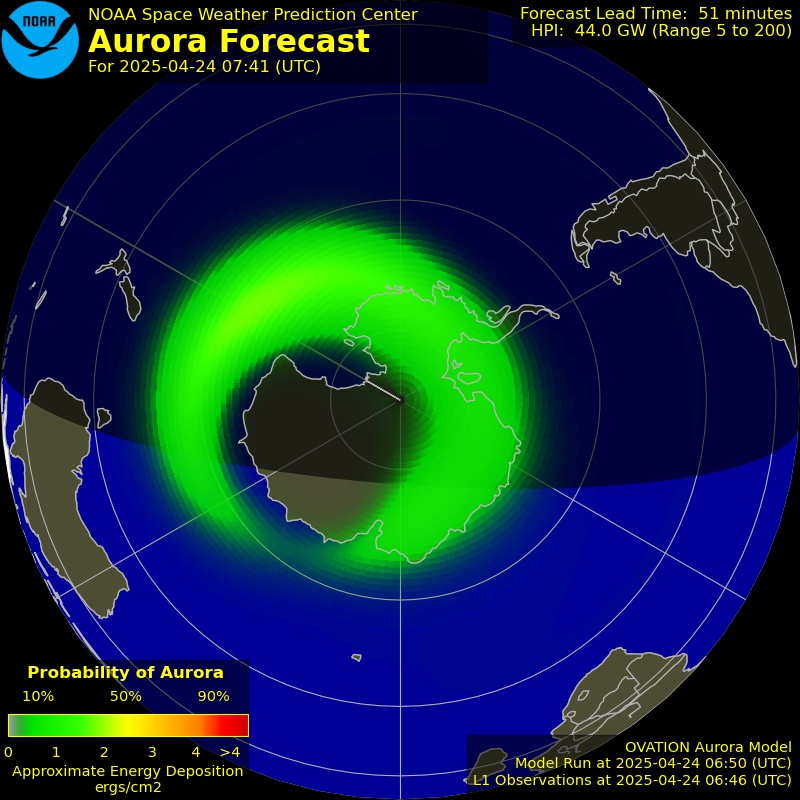![]() A NASA-funded study describes how extreme solar eruptions could have severe consequences for communications, power grids and other technology on Earth.
A NASA-funded study describes how extreme solar eruptions could have severe consequences for communications, power grids and other technology on Earth.
The National Academy of Sciences in Washington conducted the study. The resulting report provides some of the first clear economic data that effectively quantifies today’s risk of extreme conditions in space driven by magnetic activity on the sun and disturbances in the near-Earth environment. Instances of extreme space weather are rare and are categorized with other natural hazards that have a low frequency but high consequences.
“Obviously, the sun is Earth’s life blood,” said Richard Fisher, director of the Heliophysics division at NASA Headquarters in Washington. “To mitigate possible public safety issues, it is vital that we better understand extreme space weather events caused by the sun’s activity.”
Besides emitting a continuous stream of plasma called the solar wind, the sun periodically releases billions of tons of matter called coronal mass ejections. These immense clouds of material, when directed toward Earth, can cause large magnetic storms in the magnetosphere and upper atmosphere. Such space weather can affect the performance and reliability of space-borne and ground-based technological systems.
Space weather can produce solar storm electromagnetic fields that induce extreme currents in wires, disrupting power lines, causing wide-spread blackouts and affecting communication cables that support the Internet. Severe space weather also produces solar energetic particles and the dislocation of the Earth’s radiation belts, which can damage satellites used for commercial communications, global positioning and weather forecasting. Space weather has been recognized as causing problems with new technology since the invention of the telegraph in the 19th century.
A catastrophic failure of commercial and government infrastructure in space and on the ground can be mitigated through raising public awareness, improving vulnerable infrastructure and developing advanced forecasting capabilities. Without preventive actions or plans, the trend of increased dependency on modern space-weather sensitive assets could make society more vulnerable in the future.
NASA requested the study to assess the potential damage from significant space weather during the next 20 years. National and international experts from industry, government and academia participated in the study. The report documents the possibility of a space weather event that has societal effects and causes damage similar to natural disasters on Earth.
“From a public policy perspective, it is quite significant that we have begun the extremely challenging task of assessing space weather impacts in a quantitative way,” said Daniel Baker, professor and director of the Laboratory for Atmospheric and Space Physics at the University of Colorado in Boulder. Baker chaired the panel that prepared the report.
“Whether it is terrestrial catastrophes or extreme space weather incidents, the results can be devastating to modern societies that depend in a myriad of ways on advanced technological systems,” said Baker. “We were delighted that NASA helped support bringing together dozens of world experts from industry and government to share their experiences and begin planning of improved public policy strategies.”
The sun is currently near the minimum of its 11-year activity cycle. It is expected that solar storms will increase in frequency and intensity toward the next solar maximum, expected to occur around 2012.
The Heliophysics Division of NASA’s Science Mission Directorate in Washington provided funding for the study. The division seeks to understand the sun, its solar processes and the interaction of solar plasma and radiation with Earth, other planets and the universe. Understanding the connections between the sun and its planets will allow better prediction on the impacts of solar activity on humans, technological systems and even the presence of life itself in the universe.
The National Academies are chartered by Congress to provide independent technical and scientific advice to the federal government.
For images related to the study and more information about the Heliophysics Division, visit: http://nasascience.nasa.gov/heliophysics
To view the National Academy of Sciences’ complete report, visit: http://www.nap.edu/catalog/12507.html
[phpbay]space weather, 100, “378”, “”[/phpbay]
Space Weather Videos:
[tubepress mode=”tag” tagValue=”solar flare coronal mass ejection astronomy”]
| [phpostock]space weather,1[/phpostock] |
Filed under: Astronomy & Space Weather




















Read recently somewhere that global warming CAN cause temporary increases in snowfall due to an increasingly humid atmosphere. So there you go!
My gut feeling is that the sun is the BIG player in this ballgame, not man. And obviously the sun is a like a tiny match in the hand of God.
This article with my disclaimer:
Abrupt Change 2012: Problems with the Sun
February 16, 2010
By Ervin Laszlo
Physical changes in the intensity of solar radiation conspire with human impacts to stress the world system. Astronomers have noted that since the 1940s, and particularly since 2003, the Sun has become remarkably turbulent, with the exception of the last year or so. Solar activity is predicted to peak around 2012, creating storms of intensity unprecedented since the 1859 “Carrington event,†when a large solar flare accompanied by a coronal mass ejection flung billions of tons of solar plasma into the Earth’s magnetosphere.
Solar storms, capable of traveling at speeds up to 5 million miles per hour, could knock-out virtually every major technological infrastructure on the planet: transportation, security and emergency response systems, electricity grids, finance, telecommunications, including satellite and other wireless networks, and even household electronic equipment.
The solar storm of 1859 was the most powerful event of its kind in recorded history. On the 1st of September of that year the Sun expelled huge quantities of high-energy protons in a large flare that traveled directly toward the Earth, taking eighteen hours instead of the usual three or four days to reach our planet. It disrupted telegraph systems all over Europe and North America. Fires erupted in telegraph stations due to power surges in the wires; and the northern lights (aurorae borealis) were seen as far south as Florida.
The next solar storm on record, in March of 1989, melted the transformers of the HydroQuebec Power Grid, causing a nine-hour blackout that affected six million people in Canada. And the solar storms that reached the Earth between October 19th and November 7th 2003 disrupted satellites and global communications, air travel, navigation systems, and power grids all over the world. It also affected systems on the International Space Station.
The solar maximum forecast for 2012 could do greater harm than any before, since human life has become much more dependent on the global energy grid. According to “Severe Space Weather Events: Understanding Economic and Societal Impacts,†a National Research Council report issued in the spring of 2009 by the U.S. National Academy of Sciences, another Carrington event would induce ground currents that knock out 300 key transformers within 90 seconds and cut off power for more than 130 million people in the U.S. alone. Its cost could be as high as 2 trillion dollars, and recovery time would be four to ten years. An even worse impact would be felt in China, where the electrical grid is more vulnerable than in the West.
A major solar storm would cause the failure of electric power in most parts of the world. The above cited report of the National Academy of Science claims that this would have catastrophic consequences. People in high-rise apartments, where water has to be pumped up, would be cut off immediately. For most others drinking water would come through the taps for about half a day, but the flow would then cease without electricity to pump it from reservoirs. Transportation systems directly or indirectly dependent on electric power (which means practically all systems) would come to a standstill. Back-up generators would operate at some sites until their fuel ran out. For hospitals that would mean about 72 hours of essential care only services. Without power for heating, cooling and refrigeration, and with a breakdown in the distribution of medicines and pharmaceuticals, urban population would begin to die back within days.
Scientists forecast yet another disruptive event for the end of 2012: breaches in the Earth’s magnetic field. In the past this field protected living systems from the effects of solar storms and coronal mass ejections. Lately the magnetic field has diminished in intensity and holes and gaps have appeared. Scientists in South Africa measured cracks in the magnetic field the size of California, and in December of 2008 NASA announced that its Themis Project had found a massive breach that would allow a devastating amounts of solar plasma to enter the Earth’s magnetosphere.
The fluctuation of the magnetic field could also lead to the reversal of the planet’s magnetic poles. During the course of reversal the magnetic field would become still weaker, and the danger to life from solar and stellar radiation would greatly increase.
Another scientific report of relevance concerns the entry of our solar system into a highly energized region of space. This turbulent region is making the Sun hotter and stormier and has already caused climate change on other planets. According to Russian scientists the effects on Earth will include an acceleration of the magnetic pole shift, the vertical and horizontal distribution of ozone, and an increase in the frequency and magnitude of extreme climate events.
There is solid scientific evidence backing up the prophecy that the end of 2012 will be a turbulent epoch. Will we be ready for the abrupt shifts and disruptions it will bring, and ready to seize the opportunities that will open in their wake? We must now face this question. The answer to it is not yet in, but one thing is certain: we must wake up to both to the dangers and to the opportunities of the “WorldShift 2012†awaiting us.
http://standeyo.com/NEWS/10_Space/100217.2012-sun.html